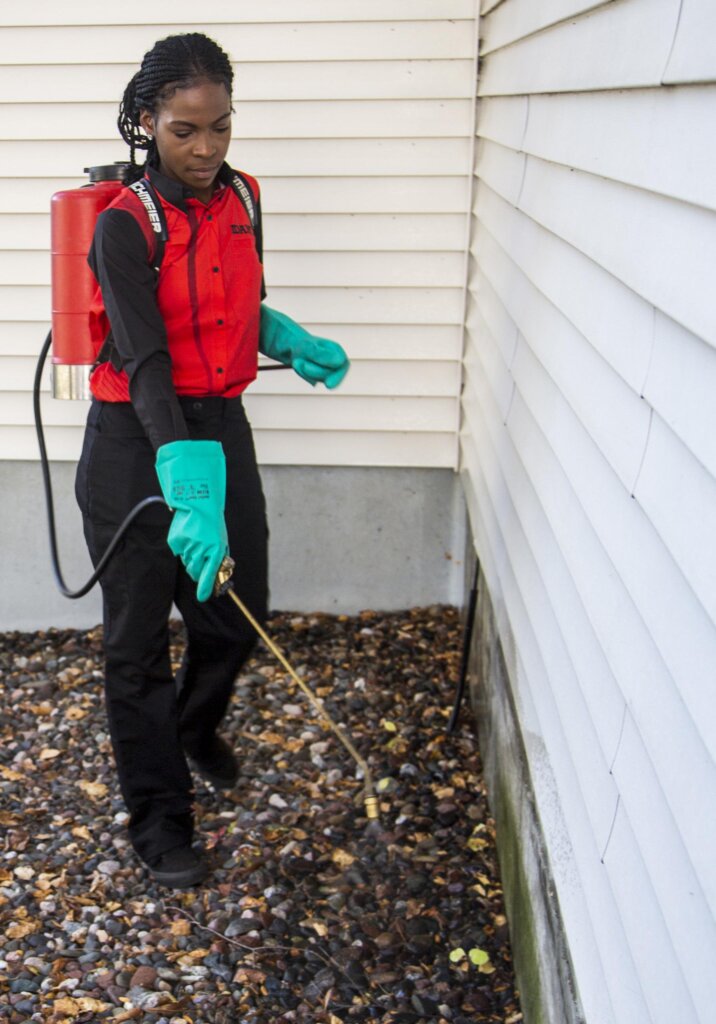Pest Control services for residential and commercial properties.
Eco-Friendly Pest Control Approaches for Handling Wild Animals in Urban Locations
Urban areas frequently find themselves at the intersection of human activity and wild animals, leading to special difficulties in insect management. These methods not just secure the atmosphere but also boost neighborhood interaction in wildlife management. As city populations proceed to expand, comprehending the dynamics of wild animals communications becomes significantly critical.
Recognizing Urban Wild Animals Dynamics
Recognizing Urban Wildlife Dynamics is essential for establishing efficient and environmentally friendly pest control approaches. Urban areas are increasingly coming to be habitats for various wild animals species, driven by variables such as habitat fragmentation, food schedule, and human infringement. Recognizing these characteristics permits a nuanced technique to pest management that lines up with eco-friendly principles.
Urban wildlife commonly includes types such as raccoons, squirrels, and birds, which adjust to city atmospheres, locating specific niches in green areas, parks, and also suburbs. Their visibility can result in disputes with people, especially when they exploit human resources for food and sanctuary. Understanding the habits and eco-friendly functions of these varieties informs techniques that lessen adverse interactions while advertising biodiversity.
Furthermore, acknowledging the interdependencies within metropolitan ecosystems helps in determining essential areas for habitat conservation and reconstruction. This knowledge contributes to the development of integrated insect monitoring (IPM) strategies that consider the ecological balance, thus minimizing dependence on harmful chemicals. By fostering coexistence between humans and urban wildlife, cities can create healthier atmospheres that benefit both citizens and regional environments, leading the way for lasting city living.
All-natural Repellents and Deterrents
All-natural repellents and deterrents use a lasting option to conventional insect control techniques by harnessing the power of nature to maintain undesirable types at bay. These environmentally friendly options commonly make use of plant-based active ingredients, necessary oils, and various other naturally occurring substances that deter parasites without damaging the atmosphere.
One effective all-natural repellent is peppermint oil, which is recognized to repel rodents and pests. Its strong scent is undesirable to lots of insects, making it a popular choice for city settings. Similarly, vinegar and citrus peels can act as deterrents, as their strong smells are commonly uninviting to different wild animals.
Furthermore, diatomaceous earth is a natural powder that can be spread out in areas susceptible to pest task, properly dehydrating and hindering bugs without posing threats to non-target types. Furthermore, garlic sprays and neem oil are identified for their ability to repel a large range of parasites, including both pests and larger wild animals.
Executing these all-natural repellents not only lowers reliance on chemical pesticides however additionally advertises a healthier metropolitan community, promoting an extra balanced coexistence between human beings and wildlife. By utilizing these techniques, city areas can efficiently handle parasite populations while minimizing environmental effect.
Environment Alteration Techniques
Effective habitat adjustment strategies play an important function in lasting insect management by altering the setting to make it less conducive to pest invasions. By comprehending the environmental characteristics of city locations, homeowner can apply critical modifications that discourage insects while promoting biodiversity.
(Cockroach exterminator Port Charlotte)One key technique includes keeping appropriate cleanliness. This consists of regular waste removal, protecting garbage containers, and getting rid of standing water to decrease reproducing websites for pests and rodents. Additionally, landscaping practices such as choosing indigenous plants can boost eco-friendly balance, offering habitats for valuable organisms while reducing resources for bugs.
An additional vital strategy is to secure access points in buildings. Inspecting and fixing splits in foundations, walls, and home windows can substantially minimize bug gain access to. Additionally, creating physical obstacles, such as Extra resources fencings or plant buffers, can inhibit wildlife motion into human-inhabited locations.
Integrated Bug Administration Practices
Building upon habitat alteration methods, integrated parasite administration (IPM) practices supply a holistic strategy to managing pest populaces while reducing environmental effect. IPM integrates various approaches, including organic, cultural, mechanical, and chemical controls, to attain efficient bug monitoring.
Biological control involves the intro of natural predators or bloodsuckers to decrease insect populaces. Cultural methods, such as plant rotation and hygiene, disrupt pest life cycles and reduce their habitats - Pest Control. Mechanical controls, like traps and obstacles, provide immediate remedy for parasite stress without chemical intervention
Chemical controls are utilized as a last hope, concentrating on targeted applications that limit injury to non-target types and the atmosphere. The choice of eco friendly pesticides, when needed, is indispensable to the IPM framework. In addition, checking bug populations and analyzing potential damage aids inform decision-making, ensuring that treatments are prompt and efficient.
Neighborhood Participation and Education And Learning

(Mouse Control)Workshops and informative sessions can outfit residents with expertise about native types, environment preservation, and reliable non-toxic insect monitoring techniques. Collaboration with institutions, regional companies, and federal government firms further boosts educational outreach, guaranteeing that vital info gets to varied target markets.
In addition, community-led campaigns, such as neighborhood clean-up days and habitat remediation jobs, not only promote biodiversity but also strengthen area ties. Pest Control. By motivating locals to share their experiences and monitorings, areas can develop targeted methods that address specific neighborhood parasite concerns
Integrating comments from homeowners right into parasite administration prepares enables a more receptive and flexible approach to wild animals obstacles. Eventually, notified and engaged areas are crucial to accomplishing long-term success in green parasite control, bring about much healthier urban settings that appreciate both human and ecological needs.

Verdict
In conclusion, environmentally friendly insect control approaches offer sustainable remedies for managing urban wildlife. By prioritizing habitat modification, utilizing natural repellents, and implementing integrated pest management practices, communities can foster a harmonious conjunction with neighborhood animals.